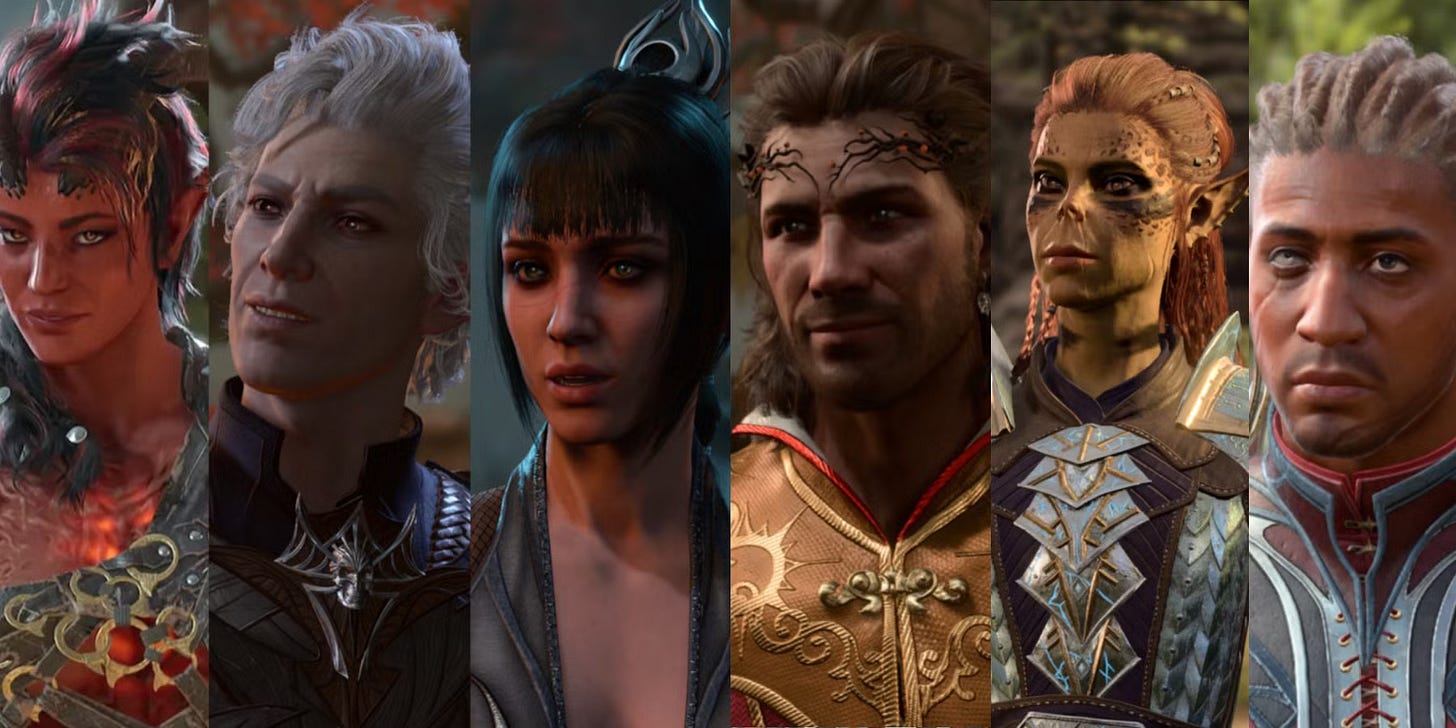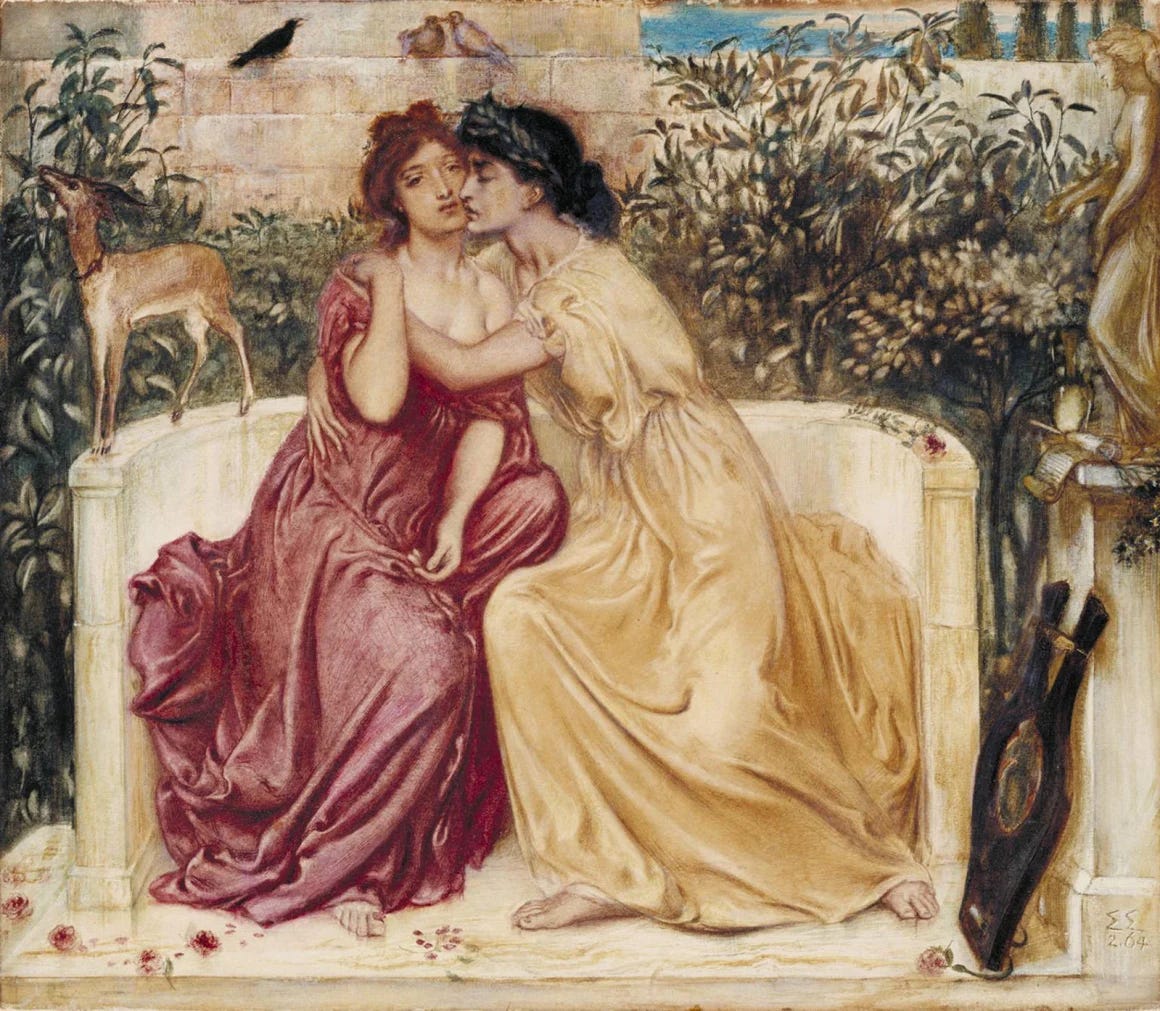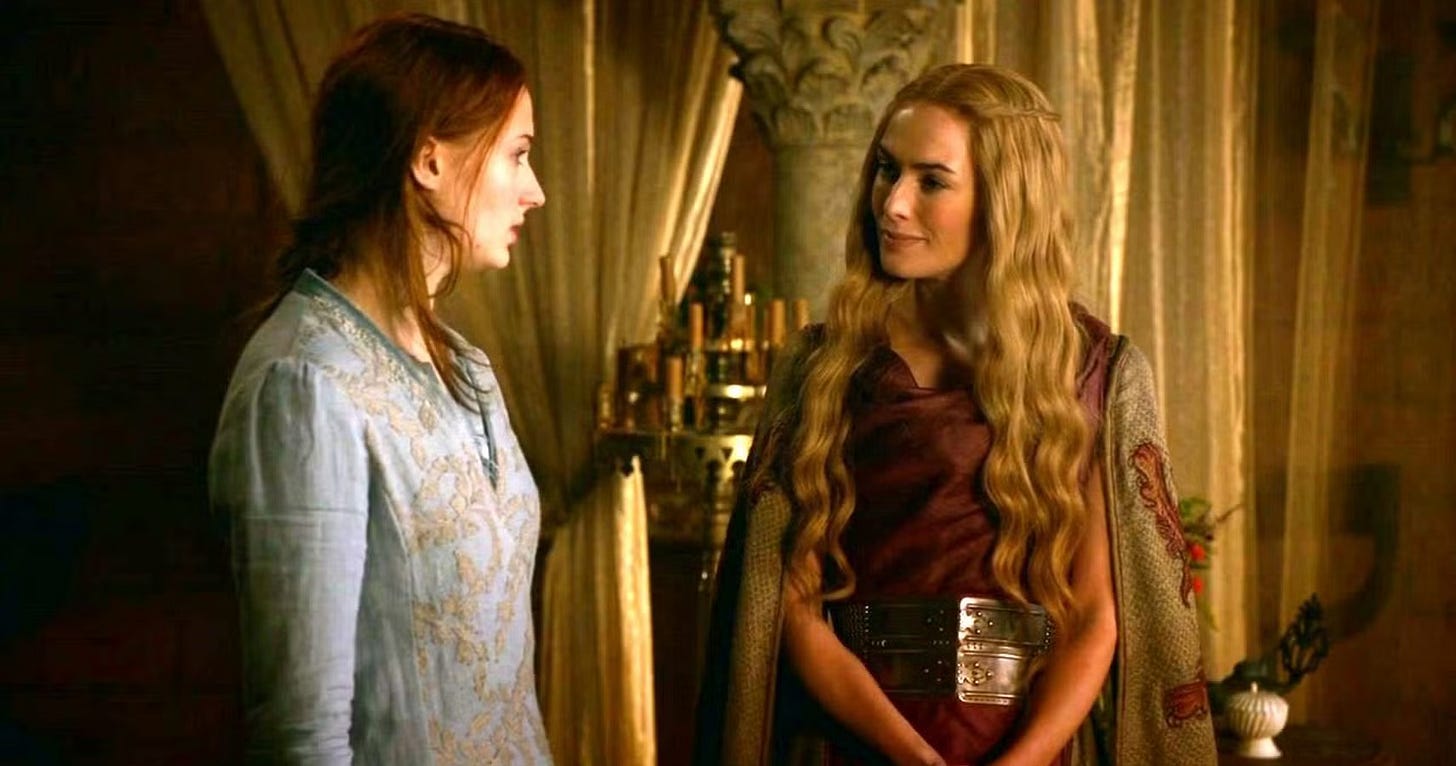One of my favorite recent Twitter memes has been the below:

When I saw this tweet, I laughed, and then spent an entertaining ten minutes scrolling through the list of M/M ships under this tweet. The part that startled me is just how many were mentioned. After a minute, though, I wasn’t quite so surprised. If my time on both the fan internet and the book internet has taught me anything, it’s that trying to get anyone, including other women, to care about female characters is like pulling teeth from a very angry tiger.
To explain this phenomenon takes a lot of background, so let’s look at some statistics.
For the last several years, Tumblr user centrallumina, who also goes by the ao3 handle centreoftheselights, has been documenting trends in AO3’s top 100 ships — i.e. the most-posted-in relationship tags each year. The list is always, and I do mean always, dominated by men. In 2024, there were sixty-four M/M pairings on the list, and five F/F; the first F/F pairing appears at number nineteen on the list. In 2023, there were fifty-nine M/M pairings and six F/F. As of 2024, the top 100 ships of all time list contains exactly five F/F ships, compared to seventy M/M pairings.
There’s also a pretty significant racial disparity in fanfiction. As of the 2024 update, the characters who appear on the 100 top ships of all time list are primarily white or Asian (99% of those from anime or from one of the several BTS ships); of the 202 characters on the list, five characters are Latino, two are Middle Eastern or North African, one is Afro-Latina, and one is Indigenous. Genderwise, only twenty-one are women, two non-binary, and one of indeterminate gender; 178 of the 202 characters are men. Let’s put it a different way: Of those 100 top relationships, forty are between two white men. If you enter a fandom, it is a pretty fair assumption that the popular characters will be the white men.
To enjoy any character of color in fandom is a bit of a losing battle. I think frequently of the brief experience where my TikTok FYP realized I was really into Baldur’s Gate 3, a fantastic game with six incredibly well-written and dynamic love interests. Which is why, of course, all of the fanfiction written about the video game, and the fanedits made of it, and the long hot takes written in defense of each character in it, focus on either Astarion, the first white man, or Gale, the second white man. God forbid a woman be a Wyll and Karlach enjoyer.

In the mainstream romance genre, there are more women, but not more lesbians. While straight romance still dominates, queer romance is growing. But if you were aiming to read a book with lesbians, asking for queer romance recs will get you nowhere. Of the current top twenty books in the LGBT tag on Goodreads, only three contain a romance between two women.
As Jessica Rose writes for OutWrite, the oldest queer college publication in the United States, this phenomenon is not a matter of quality — as you can tell by the popularity differential in queer books by the same author. Casey McQuinston’s debut Red, White, and Royal Blue was a viral hit; neither of their following books, both sapphic, have received nearly the same level of attention.
To bring this up in either a mainstream fandom space or a mainstream romance space is still oddly faux pas, and can usually get you immediate defensiveness from someone random whose entire engagement with all of the media they consume consists of wanting to fuck white men. Fandom spaces typically justify this with an array of the following arguments:
The white men just happen to be better written and there are no interesting female characters on the show.
There are no relationships between women in the show. (This falls apart pretty quickly when you realize that several of the M/M ships on the AO3 ranking never interact in canon.)
People only like enemies to lovers and women just don’t hate each other in media, or people only like friends to lovers and women just don’t like each other in media.
These may be true of some shows. But why do the most popular fandoms just so happen to contain only well-written white men? Why is it that when the women are well-written, the fandom can never become as popular?
In online spaces for romance readers and authors, the justification tends to be that books written about two women are just worse, inherently, somehow. Inevitably most of the people using this justification have not read any F/F, so I find this very difficult to take seriously. For the record, the other justification does tend to be that F/F is just less available — which is also no longer true and which could be fixed by about three seconds on Google, but is at least a little less disingenous.

I think the real reason behind the lack of interest in F/F originates from two factors, each of which underlies the fandom and romance spaces’ excuses for lack of interest: The majority of fanfiction/romance authors and readers just want to write and read about hot men, and the majority of fanfiction/romance authors and readers judge female characters much more harshly.
The first reason is more shallow. A lot of people engage in romance, romantasy, and fanfiction at least in part as erotica. Not everyone and no shame, but frankly, some people are looking to write about men they think are hot hooking up. To add a woman to that — or god forbid, two of them — would ruin it. There is absolutely also a racial dimension to what men people believe are hot, though to fully unpack this would be another post.
On a more sympathetic level, I wonder if women who write fanfiction are subjecting themselves to an overly-critical internal gaze. From a 2014 blog post about this exact same topic:
…fanfic authors, especially the 80% of them which are female-identifying, are societally conditioned to regard female sexuality or female pleasure as unimportant or undeserving of attention.
But more importantly: It seems incredibly clear to me, through all of my interactions and engagements in fandom, that people just really deeply do not like female characters or characters of color. Essentially every fandom I’ve ever been in with characters of mixed race has significantly more interest in the white man; the same can be said for every fandom with major female characters. From a 2014 autostraddle post:
Patriarchy teaches us to care the most about male characters, most often white male characters. Patriarchy says that male characters are the most relatable, the most interesting, the most likeable. Unlikeable female characters are a reason I hear cited for the lack of femslash out there, but it makes me wonder: Are these characters unlikeable because they’ve been crafted this way, or are they unlikeable because we have been trained to automatically find female characters less appealing? We let their male counterparts get away with murder and adultery and bad behavior only to condemn the ladies for being wet blankets or cheaters or “crazy bitches.”
This author points to the so-called the Skyler White Effect, named after Anna Gunn’s character on Breaking Bad — people just do not like women who are dislikable. (See also: every woman on Game of Thrones.) A man can be complex and flawed; a woman cannot be. And if people are unable to like women in the first place, how will they ever care about female characters?

The general defense of hating F/F is, as always, that to hate writing about women falling in love with each other is a preference. But inevitably, it is a preference that leaves women in the background, and particularly leaves lesbians and sapphics completely isolated from the mainstream romance genre.
For those who aren’t interested, I think it would be worth critically considering where that disinterest comes from — and whether it’s an organic disinterest, or one built from a society where women, and particularly women’s desire, is secondary.







so much of the argument also relies on “i just like it”- and if everyone simply “likes” content without women and without people of color, then that has to come from somewhere not organic. but admitting that the things they “happen to like” are not inborn and can be questioned is a concept many people online are allergic to.